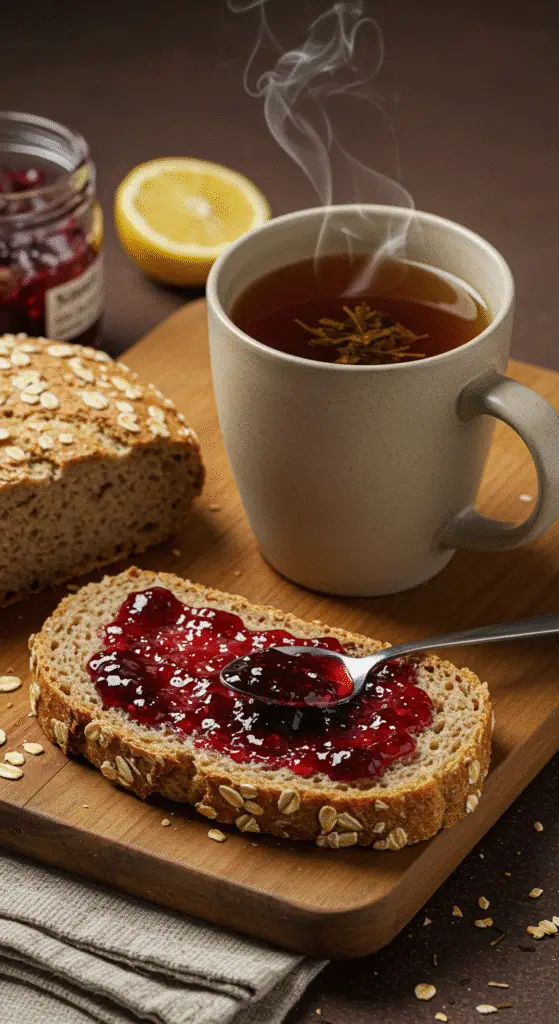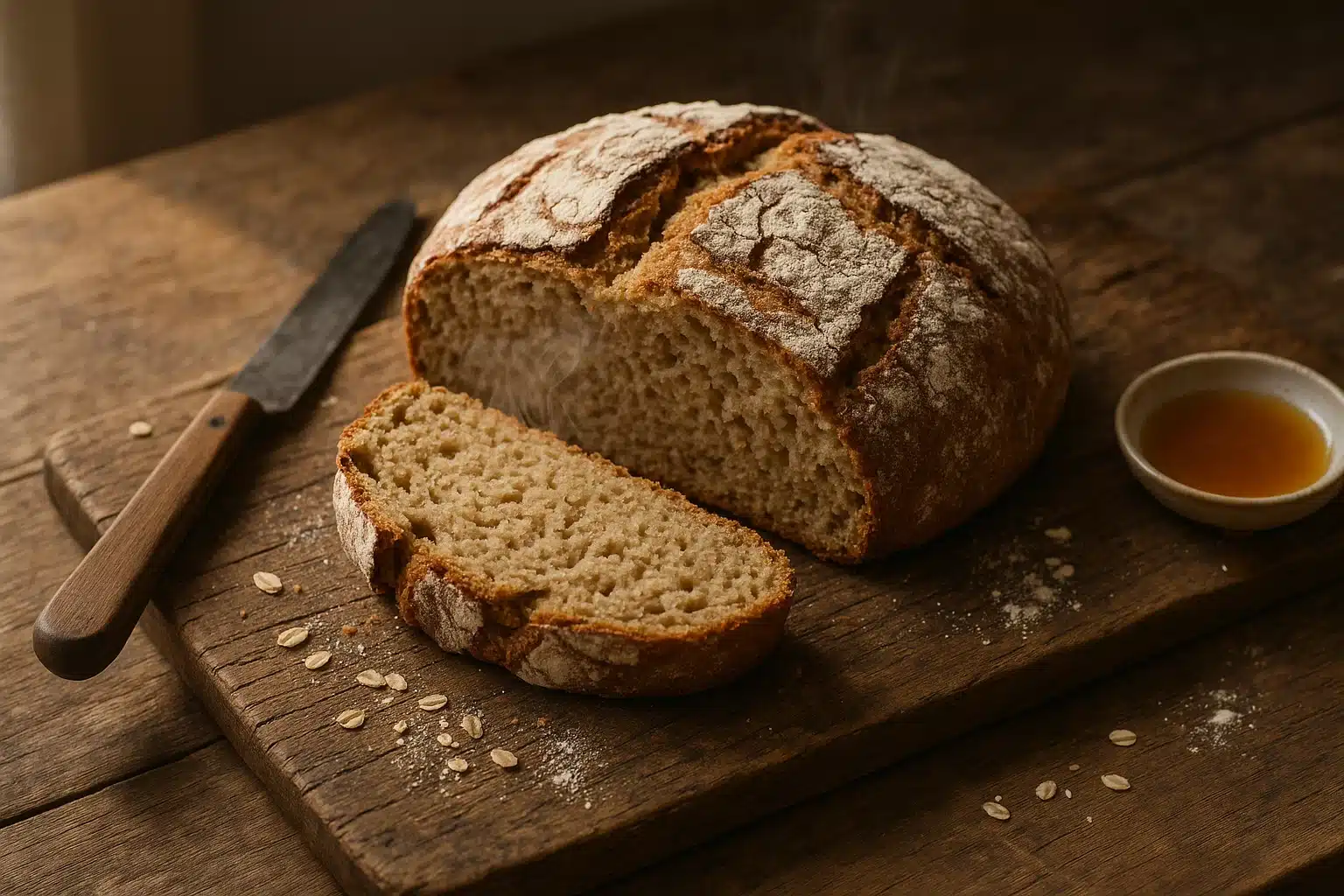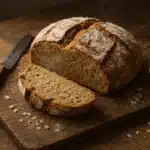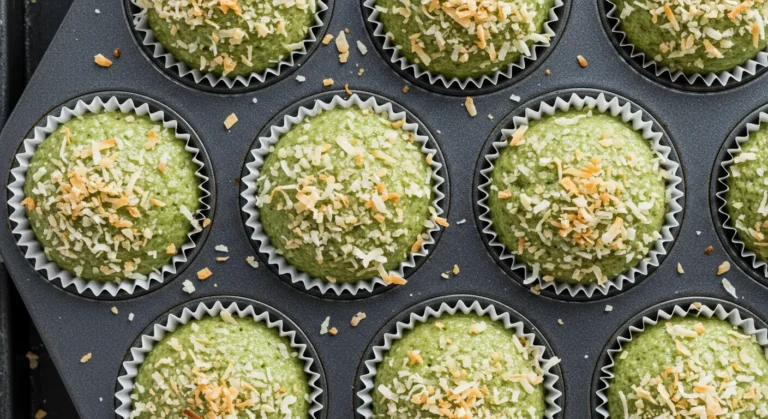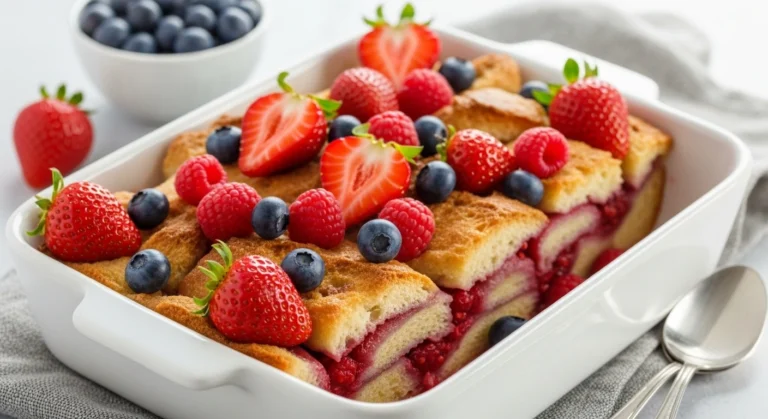Easy Oat Flour Bread – Soft, Gluten-Free, and No Kneading Needed
Oat flour bread is the ultimate solution for anyone craving homemade bread without the hassle of kneading or complicated ingredients. This easy recipe delivers a soft, hearty loaf that’s naturally gluten-free and made entirely from wholesome pantry staples. Whether you’re new to gluten-free baking or just looking for a nutritious alternative to traditional bread, this no-knead oat flour bread is a delicious and foolproof option. Using just a blender and simple prep, you’ll create a moist, sliceable loaf that’s perfect for sandwiches, toast, or enjoying plain with your favorite spread. Ideal for meal prep or fresh-from-the-oven comfort, this recipe is as versatile as it is satisfying.
PrintOat Flour Bread Recipe
A quick, no-knead oat flour bread made with yogurt, honey, and rolled oats. Soft, nourishing, and ideal for enjoying any time of day.
- Prep Time: 5 minutes
- Cook Time: 50 minutes
- Total Time: 55 minutes
- Yield: 12 1x
- Category: Breakfast
Ingredients
2 ½ cups (235 g) oat flour (blend quick oats if needed)
1 tbsp (11 g) psyllium husk powder (optional, improves texture)
2 tsp baking powder
½ tsp baking soda
½ tsp salt
¾ cup (184 g) plain yogurt (or dairy-free option)
¾ cup (184 g) milk (dairy or plant-based)
2 large eggs
¼ cup (55 g) canola oil (or preferred oil)
¼ cup (85 g) honey
1 cup (104 g) old fashioned rolled oats (gluten-free if needed)
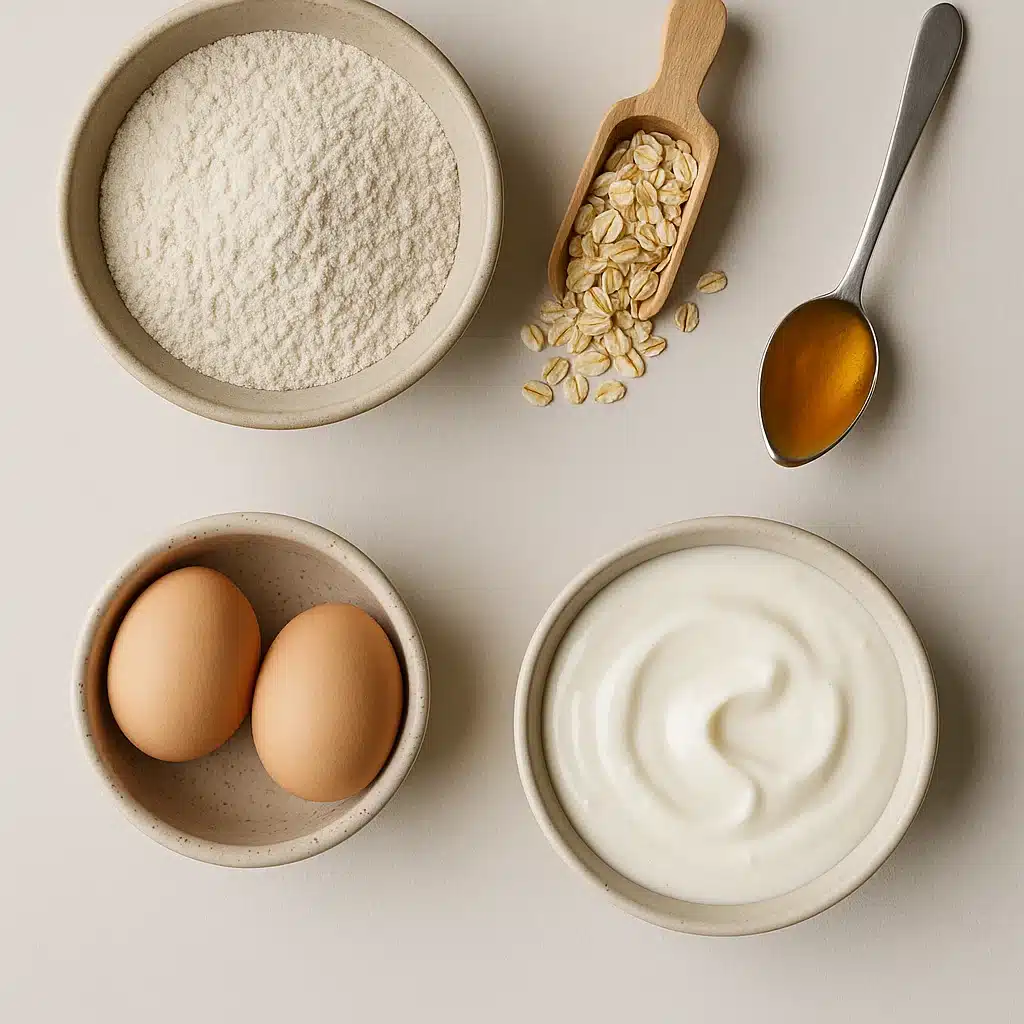
Instructions
Preheat your oven to 350ºF. Generously grease an 8×4-inch loaf pan and set aside.
If using whole oats, blend 2 ½ cups of rolled oats in a food processor or blender until finely ground to make oat flour.
In the blender, add oat flour, psyllium husk powder, baking powder, baking soda, salt, yogurt, milk, eggs, oil, and honey. Blend until the mixture is smooth. Scrape down the sides as needed.
Add 1 cup of rolled oats to the mixture. Pulse 2–3 times—do not overblend.
Pour the batter into the prepared loaf pan. For a rustic finish, sprinkle more oats on top.
Bake for 50–55 minutes. Tent with foil halfway through and rotate the pan. The bread is done when it reaches 200ºF internally or a skewer inserted comes out clean.
Let the bread rest in the pan for 10 minutes. Then remove it and let it cool fully on a wire rack before slicing. For best results, wait at least 30 minutes to slice.
Notes
Psyllium Husk Powder: Helps bind the bread for a sturdier slice. While optional, it improves texture, especially for sandwiches.
Dairy-Free Version: Substitute ¾ cup applesauce for yogurt and use non-dairy milk. Expect a slightly looser crumb; extend baking time slightly if needed.
No Blender? Use store-bought oat flour and mix dry and wet ingredients in separate bowls before combining. Fold in oats and proceed as directed.
Storage: Cool completely before slicing. Store airtight at room temp up to 3 days or freeze for up to 3 months.
Nutrition facts are estimates and may vary based on ingredients used, portion sizes, and preparation methods.
Nutrition
- Serving Size: 12
- Calories: 216kcal
- Sugar: 8g,
- Sodium: 172mg
- Fat: 9g
- Saturated Fat: 1g
- Trans Fat: 1g
- Carbohydrates: 29g
- Fiber: 2g
- Protein: 7g
- Cholesterol: 30mg
Keywords: oat flour bread, psyllium husk powder, homemade oat flour, gluten free oats, ground flaxseed, vanilla yogurt, psyllium husk, baking powder, gluten free, baking soda, rolled oats, dairy free, raw milk, soy milk, honey, eggs
Let’s connect! Follow me for more Joylicious Recipes: Facebook, Instagram, Pinterest
Frequently Asked Questions About Oat Flour Bread
Yes! Oat flour is naturally gluten-free and creates moist, hearty loaves. It works best in quick breads or when combined with binding agents like eggs or psyllium husk.
You can substitute oat flour in many recipes, but it doesn’t behave the same as bread flour. It’s ideal for quick breads like this one, but not suited for recipes requiring gluten development.
Oat flour lacks gluten, so it doesn’t rise as well with yeast. For yeast-based oat flour bread recipes, it’s best to combine oat flour with another flour or use binding agents.
This type of bread is high in fiber, easy to digest, and typically contains fewer calories than many wheat-based alternatives. It’s a smart choice for those seeking a more nutritious and heart-healthy option in their baking routine.
More wholesome and creative bakes
Try a twist with this moist banana bread made with mayo.
Need a soft, rich loaf? This condensed milk bread is a hit!
Craving savory? Our BBQ chicken grilled cheese is the perfect sandwich filler.
For a cozy breakfast, don’t miss these fluffy oatmeal pancakes without banana.
Or start the day right with chocolate raspberry overnight oats.
Final Thoughts
If you’re searching for a reliable, easy, and nutritious bread recipe, this one ticks all the boxes. It’s quick, satisfying, and versatile—whether you enjoy it fresh out of the oven or sliced from the freezer. Add it to your go-to gluten-free baking lineup and enjoy wholesome homemade bread with every slice.
